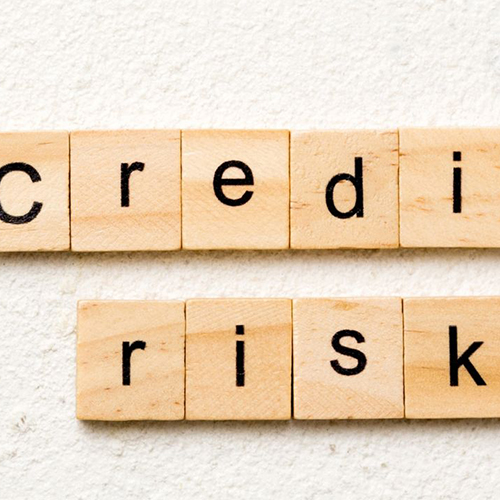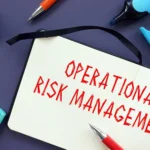Navigating the labyrinth of credit risk is a formidable task for modern banks. With the financial landscape fraught with uncertainties—from stringent regulatory demands to volatile market dynamics—institutions face myriad challenges in managing credit effectively. This article sheds light on these pressing issues and offers pragmatic solutions to help banks fortify their credit risk frameworks, ensuring resilience and compliance in an ever-evolving environment.
Credit risk is the ever-present possibility that a borrower will default on their debt, and it remains one of the most significant threats to a bank’s stability. In a landscape of high economic uncertainty, proactively managing this risk isn’t just a best practice—it’s essential for survival.
A successful credit risk management strategy mitigates losses, curtails fraud, and maximizes the risk-adjusted rate of return. However, navigating this complex environment presents significant hurdles.
This blog explores the top challenges in credit risk management today and provides actionable solutions to overcome them.
Top Credit Risk Challenges and Solutions
Challenge 1: Complex and Evolving Regulatory Requirements
Keeping pace with regulatory shifts is a primary challenge. Compliance burdens from bodies like the Dodd-Frank Act impose complex demands regarding risk assessment, capital adequacy, stress testing, and reporting. Failure to comply can lead to hefty penalties, loss of stakeholder trust, and reduced business opportunities.
Solution — Foster a Culture of Proactive Compliance
Institutions must embed compliance risk management into their core operations.
- Conduct regular internal and external audits to identify gaps.
- Implement robust compliance controls and automated reporting where possible.
- Foster a compliance-first culture through continuous training.
- Maintain open lines of communication with regulatory authorities to seek guidance and clarity.
Challenge 2: Poor Data Quality and Availability
Effective risk assessment relies on vast amounts of high-quality data. However, many banks struggle with data silos, legacy systems, unreliable third-party data, and a lack of data governance. This hampers the ability to make informed, accurate decisions.
Solution — Implement a Unified Data Governance Strategy
Centralizing and managing data is critical.
- Data Governance
Establish clear policies, processes, and controls to govern data throughout its lifecycle, from collection to disposal, ensuring accuracy and consistency. - Robust Data Management Systems
Invest in modern systems that break down silos and ensure data is accurate, complete, and readily available for analysis. - Advanced Data Analytics
Utilize data analytics and business intelligence solutions to efficiently assess and analyze vast datasets for deeper insights.
Challenge 3: Inaccurate Risk Assessment
Accurately evaluating a borrower’s creditworthiness is the heart of credit risk management. This task is complicated by individuals or SMEs with limited credit histories. An inaccurate assessment can directly lead to a higher risk of default and financial loss.
Solution — Leverage Technology and Strong Internal Controls
Banks can improve accuracy by combining technology with proven processes.
- Leverage intelligent digital solutions using AI/ML to analyze vast amounts of alternative data beyond traditional credit scores. Learn more about modern credit risk analysis techniques.
- Implement robust Know Your Customer (KYC) policies, including Customer Due Diligence (CDD) and Enhanced Due Diligence (EDD).
- Deploy strong internal controls and risk mitigation policies to reduce errors and standardize the assessment process.
Challenge 4: Counterparty Risk
Counterparty risk—the threat that another party in a contract will fail to fulfill its obligations—is a major concern. A single counterparty default can trigger a cascade of financial losses and destabilize a portfolio.
Solution — Diversify and Secure Agreements
Mitigating this risk requires a multi-faceted approach.
- Diversify counterparties to distribute risk across multiple entities instead of concentrating it in a few.
- Conduct effective KYC and due diligence on all counterparties before entering an agreement.
- Use collateral agreements, letters of credit, and other financial instruments to secure obligations.
Challenge 5: Rapidly Changing Market Conditions
The financial industry is in constant flux due to volatile market conditions, new financial products, and evolving customer behaviors. An institution’s inability to adapt quickly to these shifts can expose it to unforeseen risks and significant losses.
Solution — Build Agility with Analytics and Training
Flexibility is key to navigating market volatility.
- Implement advanced analytics and modeling capabilities to gain real-time insights into market fluctuations.
- Invest in continuous workforce upskilling and training programs to ensure your team can interpret new data and respond effectively.
Challenge 6: Shortage of Skilled Personnel
Modern credit risk management demands a diverse skillset in statistical modeling, data analysis, and risk assessment. Finding and retaining talent with this expertise is a significant challenge for many institutions.
Solution — Partner with Specialized Managed Services
Collaborating with a managed services provider can immediately scale up a lender’s capabilities.
- Gain access to a global pool of trained and experienced risk management professionals.
- Leverage a flexible right-shoring model to support operations on your preferred shore.
- Benefit from the scalability and agility to ramp capacity up or down based on demand, a key factor when choosing the right managed services provider.
Challenge 7: Adopting and Integrating New Technologies
While technology offers powerful solutions, its implementation can be a challenge in itself. Integrating systems like blockchain into legacy infrastructure requires significant investment and expertise, but it can fundamentally enhance security and transparency.
Solution — Embrace a Strategic Technology Framework
Institutions must create a clear roadmap for technology adoption.
- Implement a Framework
A well-defined enterprise risk management (ERM) framework like COSO or ISO 31000 provides clear policies and procedures for integrating new risk management tools. - Explore Blockchain
Leverage blockchain for its ability to provide secure, transparent, and tamper-proof data. Explore why traditional banks must embrace blockchain for smart contracts, decentralized identity verification, and real-time credit profile updates.
Frequently Asked Questions (FAQ)
- What is the biggest credit risk challenge for banks today?
While all are significant, many experts point to data quality and the complexity of regulatory requirements as two of the most persistent and costly challenges facing modern financial institutions. - How can a bank foster a better risk management culture?
A strong risk culture starts from the top with clear communication from leadership. It is reinforced through continuous employee training, establishing clear accountability for risk decisions, and aligning incentives with long-term risk management goals rather than short-term profits. - What is the first step to improving a credit risk management system?
The first step is often a comprehensive gap analysis. Banks should conduct a thorough assessment of their current policies, processes, and technologies against regulatory requirements and industry best practices to identify the most critical areas for improvement.
Conclusion
Credit risk management is a multifaceted discipline that requires a comprehensive and proactive approach. By understanding the key challenges—from regulatory pressures and data integrity to market volatility and talent shortages—and implementing targeted solutions, banks can not only protect themselves from losses but also build a more resilient and profitable future.
Anaptyss helps banks manage credit risks with its exclusive Digital Knowledge Operations™(DKO™)-based approach. Our customized solutions, powered by advanced data analytics and AI/ML capabilities, enable institutions to assess credit risks efficiently and make data-driven decisions for effective risk management.
Interested in learning more about the credit risk management? Write to us: info@anaptyss.com


















